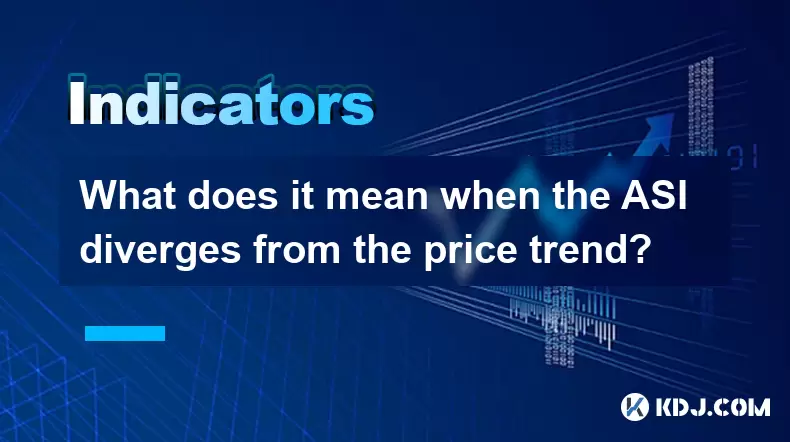-
 Bitcoin
Bitcoin $114800
-0.70% -
 Ethereum
Ethereum $4740
0.44% -
 XRP
XRP $3.018
-0.53% -
 Tether USDt
Tether USDt $0.9998
0.02% -
 BNB
BNB $863.0
-2.82% -
 Solana
Solana $205.2
1.19% -
 USDC
USDC $0.9999
0.00% -
 Dogecoin
Dogecoin $0.2303
-2.43% -
 TRON
TRON $0.3651
1.10% -
 Cardano
Cardano $0.8937
-2.19% -
 Chainlink
Chainlink $25.42
-0.96% -
 Hyperliquid
Hyperliquid $43.50
-0.67% -
 Sui
Sui $3.626
-2.57% -
 Stellar
Stellar $0.4055
-1.60% -
 Ethena USDe
Ethena USDe $1.000
0.01% -
 Bitcoin Cash
Bitcoin Cash $594.8
1.30% -
 Avalanche
Avalanche $25.04
-3.00% -
 Hedera
Hedera $0.2452
-1.68% -
 Litecoin
Litecoin $119.1
-1.96% -
 UNUS SED LEO
UNUS SED LEO $9.596
0.24% -
 Toncoin
Toncoin $3.331
-0.83% -
 Shiba Inu
Shiba Inu $0.00001277
-3.18% -
 Uniswap
Uniswap $10.94
-2.43% -
 Polkadot
Polkadot $4.044
-2.07% -
 Dai
Dai $0.0000
0.01% -
 Bitget Token
Bitget Token $4.670
-1.72% -
 Cronos
Cronos $0.1568
1.20% -
 Aave
Aave $346.1
-1.00% -
 Monero
Monero $269.5
0.15% -
 Ethena
Ethena $0.6950
-6.51%
What does it mean when the ASI diverges from the price trend?
The Accumulation/Distribution Index (ASI) helps traders spot potential reversals by revealing divergences between price and volume in crypto markets.
Aug 12, 2025 at 01:36 am

Understanding the Accumulation/Distribution Index (ASI)
The Accumulation/Distribution Index (ASI) is a volume-based technical indicator used to measure the flow of money into or out of a cryptocurrency asset over time. It combines price and volume data to assess whether a digital asset is being accumulated (bought) or distributed (sold). Unlike simple price movements, the ASI attempts to uncover the strength behind price trends by analyzing how volume interacts with price changes. When traders observe a divergence between the ASI and the price chart, it can signal a potential shift in market sentiment. This divergence occurs when the price of a cryptocurrency moves in one direction while the ASI moves in the opposite direction, indicating a weakening trend.
What Constitutes a Divergence Between ASI and Price?
A divergence happens when the price of a cryptocurrency reaches a new high or low, but the ASI fails to confirm that move by not reaching a corresponding new high or low. There are two main types of divergence: bullish and bearish. A bearish divergence occurs when the price makes a higher high, but the ASI makes a lower high. This suggests that despite rising prices, buying volume is weakening, which may indicate that the uptrend is losing momentum. Conversely, a bullish divergence happens when the price records a lower low, but the ASI forms a higher low. This implies that selling pressure is decreasing even as prices fall, potentially signaling a reversal to the upside.
How to Identify ASI Divergence on a Chart
To detect divergence between the ASI and price, traders must overlay the ASI indicator beneath the price chart, typically on trading platforms like TradingView, Binance, or MetaTrader. Follow these steps to set it up:
- Open your preferred trading platform and load the chart of the cryptocurrency you're analyzing.
- Navigate to the indicators section and search for "Accumulation/Distribution" or "A/D Line."
- Apply the indicator to the chart; it will appear in a separate pane below the price graph.
- Observe the price action and the movement of the ASI line over the same time period.
- Look for instances where the price and ASI move in opposite directions despite similar timeframes.
- Confirm divergence by checking for at least two swing highs or swing lows that do not align between price and ASI.
For example, if Bitcoin’s price climbs from $40,000 to $45,000 and then to $50,000, forming higher highs, but the ASI peaks at $45,000 and then declines during the move to $50,000, this is a clear bearish divergence.
Why Does ASI Divergence Matter in Crypto Trading?
In the volatile world of cryptocurrency, price movements can be driven by hype, news, or short-term speculation rather than genuine supply and demand. The ASI helps filter out noise by incorporating volume, which reflects real market participation. When the ASI diverges from price, it reveals a disconnect between price action and underlying volume support. For instance, if Ethereum’s price rises on low volume, the ASI may flatline or decline, suggesting that the rally lacks broad market conviction. This could precede a pullback or reversal. Traders use this insight to anticipate trend exhaustion before it becomes evident on the price chart alone.
Practical Trading Strategies Using ASI Divergence
Traders can incorporate ASI divergence into their decision-making process in several actionable ways. Here are key steps to apply this signal effectively:
- Wait for confirmation: Do not act on divergence immediately. Wait for a price reversal candlestick pattern, such as a bearish engulfing or hammer, to confirm the signal.
- Combine with support/resistance levels: If a bearish divergence appears near a known resistance zone, the probability of a reversal increases.
- Use with other indicators: Pair ASI with tools like Relative Strength Index (RSI) or Moving Averages to strengthen the signal. For example, if ASI shows bearish divergence and RSI is overbought, the combined signal is stronger.
- Monitor volume trends: A declining ASI during rising prices often coincides with shrinking trading volume, reinforcing the weakness.
- Set stop-loss and take-profit levels: In a bullish divergence setup, place a stop-loss just below the recent price low and target the next resistance level.
For example, if Solana’s price drops to $90, then $85, and finally $80, but the ASI forms higher lows at each bottom, a trader might initiate a long position upon a bullish candlestick breakout above $85, with a stop-loss at $78.
Common Misinterpretations and Pitfalls
While ASI divergence is a powerful tool, it is not infallible. One common mistake is acting on divergence too early. A divergence can persist for several candles before a reversal occurs, leading to premature entries. Another issue is ignoring the broader market context. For example, a bullish divergence in a minor altcoin may not hold if Bitcoin is in a strong downtrend, dragging the entire market lower. Additionally, low-volume periods, such as holidays or weekends, can distort the ASI, making divergence signals less reliable. Always verify that the volume data is consistent and that the asset has sufficient liquidity.
Frequently Asked Questions
Can ASI divergence occur in sideways markets?
Yes, ASI divergence can appear during consolidation phases. In ranging markets, both price and ASI may move laterally. However, a breakout accompanied by divergence—such as price breaking resistance while ASI fails to reach a new high—can indicate a false breakout and a likely reversion to the range.
Is ASI the same as On-Balance Volume (OBV)?
No, although both are volume-based indicators, they differ in calculation. The ASI considers the position of the closing price within the period’s range, giving more weight to closes near the high or low. OBV simply adds volume on up days and subtracts on down days, making ASI more sensitive to price-volume dynamics.
How often should I check for ASI divergence?
It depends on your trading style. Day traders may monitor divergence on 15-minute or 1-hour charts, while swing traders focus on 4-hour or daily timeframes. Divergence on higher timeframes tends to be more reliable due to stronger volume signals.
Does ASI work well with all cryptocurrencies?
ASI performs best with highly liquid cryptocurrencies like Bitcoin, Ethereum, or Binance Coin. For low-cap altcoins with erratic volume, the ASI may generate false signals due to thin trading activity and pump-and-dump schemes. Always assess the asset’s trading volume and market depth before relying on ASI.
Disclaimer:info@kdj.com
The information provided is not trading advice. kdj.com does not assume any responsibility for any investments made based on the information provided in this article. Cryptocurrencies are highly volatile and it is highly recommended that you invest with caution after thorough research!
If you believe that the content used on this website infringes your copyright, please contact us immediately (info@kdj.com) and we will delete it promptly.
- Crypto Crossroads: Dogecoin, Stellar, and the Search for 2025's Top Coin
- 2025-08-24 19:25:32
- Bitcoin Price Swings, BTC News & Remittix: What's Hot Now?
- 2025-08-24 18:45:35
- Cryptos, Market Cap, 2025 Potential: Spotting the Next Big Thing
- 2025-08-24 16:45:35
- Shiba Inu vs. Layer Brett: Price Prediction and the Meme Coin Evolution
- 2025-08-24 17:05:29
- Dogecoin Price Prediction: Will DOGE Bark or Bite?
- 2025-08-24 17:45:26
- XRP Price: Analyst Prediction of $7-$8 in Few Weeks?
- 2025-08-24 17:45:26
Related knowledge

What does it mean when the +DI and -DI cross frequently in the DMI indicator but the ADX is flattening?
Aug 11,2025 at 03:15am
Understanding the DMI Indicator ComponentsThe Directional Movement Index (DMI) is a technical analysis tool composed of three lines: the +DI (Positive...

What does the sudden appearance of a "dark cloud cover" candlestick pattern during an uptrend indicate?
Aug 13,2025 at 11:35am
Understanding the 'Dark Cloud Cover' Candlestick PatternThe dark cloud cover is a bearish reversal pattern in technical analysis that typically appear...

What does it mean when the moving average, MACD, and RSI all send buy signals simultaneously?
Aug 11,2025 at 01:42pm
Understanding the Convergence of Technical IndicatorsWhen the moving average, MACD, and RSI all generate buy signals at the same time, traders interpr...

What does it mean when both the KDJ indicator and the RSI show overbought signals simultaneously?
Aug 13,2025 at 11:35am
Understanding the KDJ Indicator in Cryptocurrency TradingThe KDJ indicator is a momentum oscillator derived from the Stochastic Oscillator, widely use...

What does it mean when the price is trading above the SAR indicator but the red dots are densely packed?
Aug 09,2025 at 11:49pm
Understanding the SAR Indicator and Its Visual SignalsThe SAR (Parabolic Stop and Reverse) indicator is a technical analysis tool used primarily to de...

What does it mean when the candlestick chart forms a "Morning Star" but trading volume is sluggish?
Aug 12,2025 at 06:28pm
Understanding the Morning Star Candlestick PatternThe Morning Star is a three-candle bullish reversal pattern commonly observed in cryptocurrency pric...

What does it mean when the +DI and -DI cross frequently in the DMI indicator but the ADX is flattening?
Aug 11,2025 at 03:15am
Understanding the DMI Indicator ComponentsThe Directional Movement Index (DMI) is a technical analysis tool composed of three lines: the +DI (Positive...

What does the sudden appearance of a "dark cloud cover" candlestick pattern during an uptrend indicate?
Aug 13,2025 at 11:35am
Understanding the 'Dark Cloud Cover' Candlestick PatternThe dark cloud cover is a bearish reversal pattern in technical analysis that typically appear...

What does it mean when the moving average, MACD, and RSI all send buy signals simultaneously?
Aug 11,2025 at 01:42pm
Understanding the Convergence of Technical IndicatorsWhen the moving average, MACD, and RSI all generate buy signals at the same time, traders interpr...

What does it mean when both the KDJ indicator and the RSI show overbought signals simultaneously?
Aug 13,2025 at 11:35am
Understanding the KDJ Indicator in Cryptocurrency TradingThe KDJ indicator is a momentum oscillator derived from the Stochastic Oscillator, widely use...

What does it mean when the price is trading above the SAR indicator but the red dots are densely packed?
Aug 09,2025 at 11:49pm
Understanding the SAR Indicator and Its Visual SignalsThe SAR (Parabolic Stop and Reverse) indicator is a technical analysis tool used primarily to de...

What does it mean when the candlestick chart forms a "Morning Star" but trading volume is sluggish?
Aug 12,2025 at 06:28pm
Understanding the Morning Star Candlestick PatternThe Morning Star is a three-candle bullish reversal pattern commonly observed in cryptocurrency pric...
See all articles

























































































